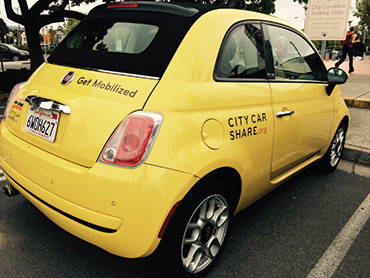Transit trends
Carmakers chase sharing economy
 The auto industry is not known for its speed in responding to the market. But in the case of the emerging sharing economy — or collaborative consumption — which is affecting everything from employment to housing, automakers are experimenting with new tactics to capture the attention of car-sharing consumers. And they have to. According to Susan Shaheen, an adjunct professor of civil and environmental engineering, 23 car-sharing companies are renting roughly 20,000 vehicles to 1.3 million American drivers. The data only includes companies that actually rent vehicles; other systems of peer-to-peer renting through social media are also taking off. All together, car sharing is growing by 35 percent a year. Ford, BMW, Rolls Royce and others are experimenting with mobile apps and business development strategies to capture some of that newly oriented consumer demand.
The auto industry is not known for its speed in responding to the market. But in the case of the emerging sharing economy — or collaborative consumption — which is affecting everything from employment to housing, automakers are experimenting with new tactics to capture the attention of car-sharing consumers. And they have to. According to Susan Shaheen, an adjunct professor of civil and environmental engineering, 23 car-sharing companies are renting roughly 20,000 vehicles to 1.3 million American drivers. The data only includes companies that actually rent vehicles; other systems of peer-to-peer renting through social media are also taking off. All together, car sharing is growing by 35 percent a year. Ford, BMW, Rolls Royce and others are experimenting with mobile apps and business development strategies to capture some of that newly oriented consumer demand.
 Merge right
Merge right
You know it when you see it: the jerk merge — when a motorist tries to save themselves by zooming rapidly into an open lane of traffic and then pulling, last minute, in front of a line of waiting cars. It happens frequently at freeway exit ramps and on busy city streets with dedicated turn lanes. If you loathe the practice, then know this: science is on your side. “Of all the maneuvers, it’s probably the most disruptive to traffic,” civil engineering professor Michael Cassidy told the San Francisco Chronicle. “If the police were to say, ‘We’re going to crack down on one type of maneuver,’ that would be the one. It would likely have the most significant effect on traffic.”

